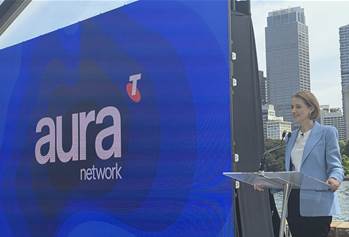This article appeared in the July issue of CRN as part of the main feature "Who wins in the cloud price wars?"
After making a great living as Amazon’s number two, global hoster Rackspace now has a fight on its hands as Google and Microsoft make their presence felt in the market. The company has a string of high-profile customers in Australia in retail and software-as-a-service, the most famous of those the high-growth accounting software platform, Xero.
Fanatical customer support remains the primary differentiator for Rackspace, says managing director for Australia Angus Dorney.
“Fanatical support is very real. Cloud is called infrastructure as a ‘service’. People focus on infrastructure but forget about the service,” Dorney says.
Rackspace provides support in areas outside of its rivals including expert cloud engineers available 24/7 in MongoDB, e-commerce, MYSQL, security and applications. “Our engineers become part of the customer’s team and help plan their solutions,” Dorney says.
Planning can continue beyond the setup phase for fast-growth companies using Rackspace’s managed cloud service. Scaling applications in the cloud can require a lot of experimentation and finessing to match the demands of the application to the infra-structure supporting it.
While the other providers also have deep support benches on call, Rackspace customers can pick up a phone and call up an engineer who can log into servers, identify issues and follow them through. “It’s more than a ticket-based interaction,” Dorney says.
A second point of differentiation is support for hybrid cloud solutions. “This is resonating very well with our Australian customers,” Dorney says. Companies value the ability to combine multi-tenanted public cloud with dedicated or virtualised private infrastructure and shift workloads between them.
Hybrid solutions appeal to businesses that rely on applications and workloads which aren’t ready to work in the public cloud. “They might have reliances on very high-performing databases, and they’re not getting the performance they need in the public cloud,” Dorney says.
Customers migrating to Rackspace often complain about the lack of information its competitors offer around the infrastructure supporting the applications. Rackspace is “more more open in giving them a peak in how things run under the hood”, such as the locations of Rackspace data centres, the type of load balancers – (Riverbed Stingray) and even API details for its cloud computing fabric controller (OpenStack Nova).
“Our whole culture is transparency. It’s really different culturally to the Googles, Amazons and Microsofts of this world,” Dorney says.
The third area of difference is Rackspace’s role in promoting the OpenStack movement, which it founded in conjunction with NASA.
Australia has an OpenStack community that values the flexibility, portability and independence of moving workloads from one provider to another over open programming interfaces (APIs). “There’s no entanglement and that’s a big concern for EC2 (Amazon) and Azure,” Dorney says.
The approach is winning some big fans. Dorney says Telstra and Cisco have announced they would build an OpenStack cloud with IBM and Softlayer in Australia.






_(11).jpg&h=142&w=230&c=1&s=1)



.jpg&w=100&c=1&s=0)
_(8).jpg&w=100&c=1&s=0)







.jpg&q=95&h=298&w=480&c=1&s=1)





